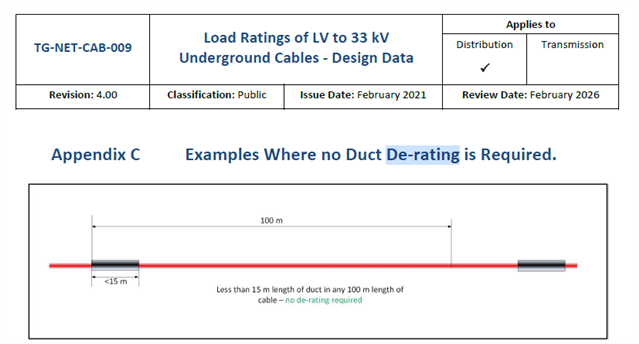Hi I am in the middle of a design for a new substation and one of the supplies is circa 150m long and will run for 146m on a ladder in free air. The final 4m will be routed underground into the substation through a duct then the substation trench into the LV switchboard.
when calculating for this if I say the cable is just on the ladder then I need a single 240mm2 cable, however if I say it’s buried in ducts then the cable requirement becomes 3 x 300mm2 cables in parallel which seems extreme in practical sense.
does anyone have any thoughts on this or experience of a similar situation and how to comply with BS7671 whilst still being practical.

